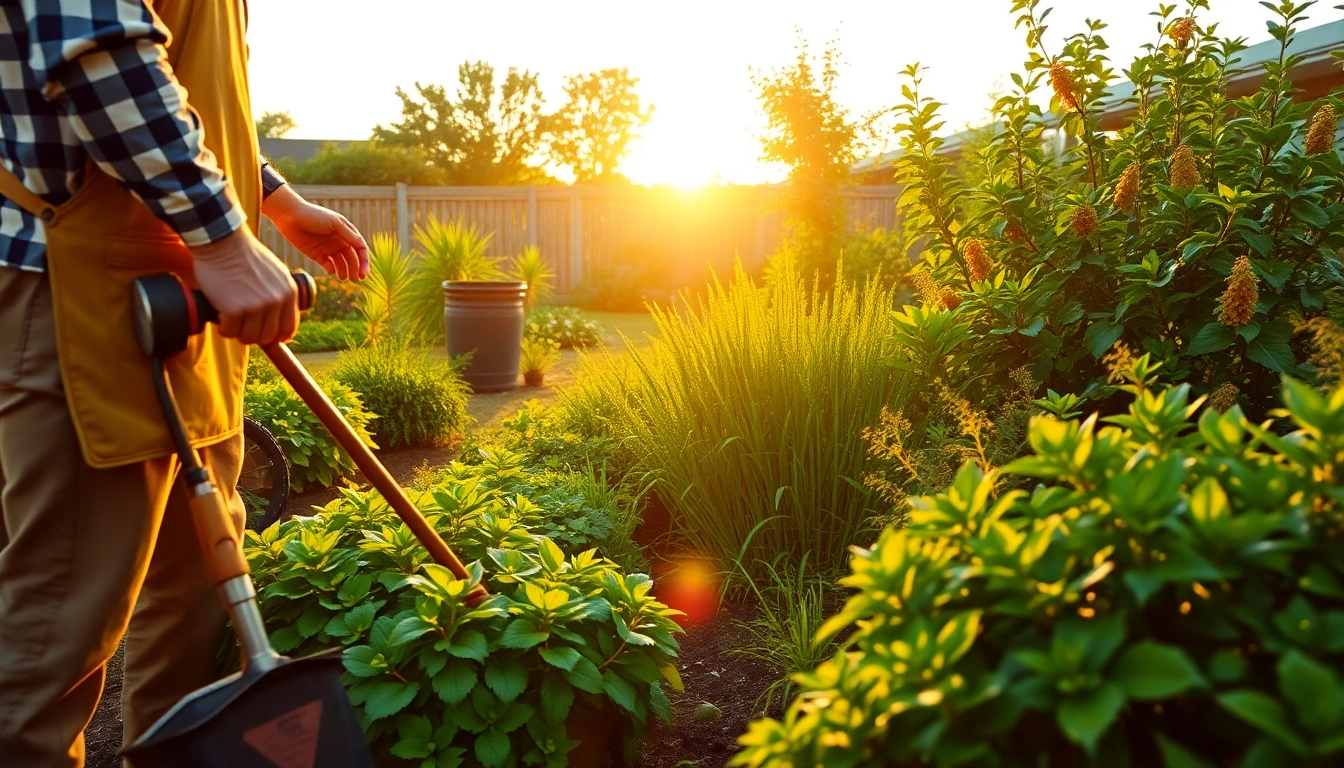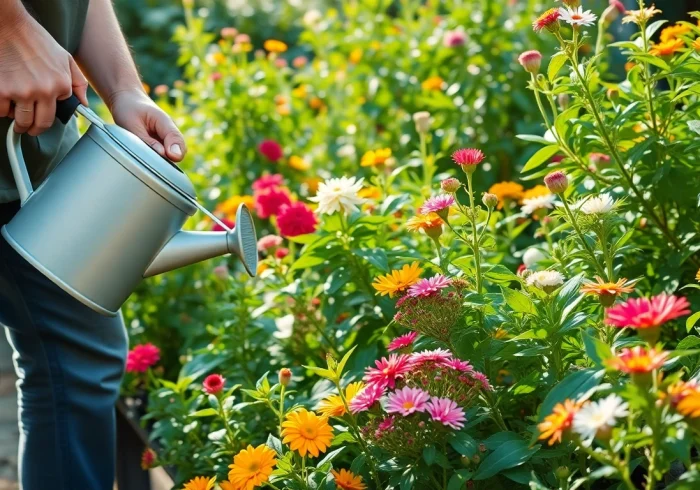Understanding Garden Maintenance Services
What is a Garden Maintenance Service?
A garden maintenance service refers to a collective set of activities designed to keep gardens and green spaces vibrant, healthy, and aesthetically pleasing. The scope of these services can range from one-time consultations to ongoing maintenance. These services often involve tasks such as mowing, trimming, weeding, and soil care, tailored to the unique needs of each garden. By hiring professionals, homeowners or commercial property managers can benefit from expert knowledge, saving time and ensuring that their gardens thrive.
Benefits of Professional Care
Engaging a garden maintenance service offers numerous benefits. First and foremost, professionals bring expertise and experience, which means that the correct methods and tools are employed to foster garden health. Moreover, regular maintenance can prevent problems before they escalate, decreasing long-term costs associated with major repairs or restoration.
Additionally, professional services often provide you with the latest insights into sustainable practices and new products that can enhance the overall health of your garden. Ensuring that each species is cared for according to its specific needs allows for personalizing care that helps the garden thrive.
Common Services Offered
Garden maintenance services typically cover a variety of tasks, which may include:
- Lawn Care: Regular mowing, fertilization, and aeration to promote healthy grass growth.
- Weeding: Manual and chemical weeding techniques to keep the garden beds free of unwanted plants.
- Pruning and Trimming: Ensuring shrubs, trees, and ornamental plants remain healthy and maintain their shapes.
- Seasonal Planting: Preparation and planting of seasonal flowers and vegetables to enhance land use.
- Pest and Disease Control: Using integrated pest management to minimize damages while preserving garden health.
Choosing the Right Provider for Garden Maintenance
Key Qualities to Look For
When selecting a garden maintenance provider, it’s crucial to consider several key qualities. Look for providers with a strong portfolio of past work and client testimonials. Certifications or memberships in professional organizations can indicate dedication and adherence to industry standards. Additionally, assess their customer service—an ideal provider will be responsive and eager to address your needs and concerns.
Evaluating Competitor Services
Conducting a competitive analysis is invaluable when selecting a garden maintenance service. Compare services offered, pricing structures, and customer reviews. Research local providers to gauge what services are considered standard and what might be unique offerings in your area. This insight allows you to make more informed decisions and negotiate effectively for the services that suit your needs best.
Client Testimonials and Reviews
Client testimonials and reviews are powerful tools in assessing a garden maintenance service. Look for platforms where clients can leave reviews, such as Google, Yelp, and social media pages. Pay attention to the recurring themes in the feedback—do clients frequently mention professionalism, punctuality, and quality of work? These indicators can provide a well-rounded view of the provider’s performance and reliability.
Best Practices in Garden Maintenance
Seasonal Plant Care Tips
Implementing seasonal plant care strategies ensures your garden remains healthy throughout the year. In spring, focus on early planting, fertilizing, and weed control to set the foundation for a vibrant growing season. Summer maintenance should concentrate on consistent watering, deadheading flowers, and keeping an eye out for pests or diseases.
As autumn arrives, consider cleaning up fallen leaves, supporting perennials as they prepare for dormancy, and planting bulbs for spring blooms. Winter care will often include protecting sensitive plants with mulch or frost blankets and planning for the upcoming gardening season based on the notes you made throughout the year.
Tools and Equipment You’ll Need
Equipping yourself with the right tools is vital for effective garden maintenance. Essential tools include:
- Hand Tools: Trowels, pruners, and weeders help with plant-specific tasks.
- Lawn Equipment: Lawnmowers, trimmers, and edgers for a polished lawn.
- Soil Test Kits: Ensuring that pH levels and nutrient content in the soil are optimal for growth.
- Compost Bins: For sustainable waste management and nutrient creation.
Eco-Friendly Maintenance Strategies
Adopting eco-friendly strategies in garden maintenance can significantly reduce your environmental footprint. Consider organic fertilizers and compost to provide nutrients without harmful chemicals. Implementing rainwater harvesting can enhance hydration efficiency while reducing dependence on municipal water systems. Crop rotation and poly-cultural planting can also support biodiversity while improving soil health, reducing pest prevalence and disease.
Common Challenges in Garden Maintenance
Pests and Diseases: Prevention and Control
Pest management is often one of the most significant challenges in garden maintenance. Prevention strategies rely heavily on monitoring plant health and environment. Employing beneficial insects like ladybugs and parasitic wasps can naturally control pest populations. For diseases, early identification is crucial. Utilizing resistant plant varieties and ensuring proper spacing can minimize the likelihood of disease spread.
Weather Effects on Maintenance Schedules
Weather conditions significantly influence gardening practices. Droughts may require modified watering schedules and the introduction of drought-resistant plants, while heavy rainfall can necessitate drainage modifications for excess water runoff. Awareness of local weather trends can help gardeners adjust maintenance schedules proactively, preventing damage and ensuring the garden remains healthy.
Understanding Soil Health
Soil health directly impacts plant vitality. Regular soil testing allows you to identify pH levels, nutrient deficiencies, and organics, guiding decisions on fertilization or amendments. Maintaining a balance of organic matter through mulching and composting can enhance soil structure, leading to better water retention and root development.
Measuring the Success of Your Garden Maintenance
Setting Performance Metrics
Measuring success in garden maintenance involves establishing clear metrics to assess growth, health, and aesthetic quality. Consider metrics like plant survival rates, the proportion of weeds relative to planted species, and seasonal bloom counts. These indicators help in assessing the effectiveness of practices implemented and guide future strategies.
Regular Maintenance vs. One-Time Services
Evaluating whether to engage in regular maintenance or opt for one-time services depends on your garden’s needs and your level of engagement. Regular services often yield better long-term results as issues are addressed systematically. However, occasional services might suffice for gardens that require less attention or when seasonal care is all that’s needed. Understanding your garden’s specific requirements will guide this decision.
Gathering Feedback and Making Adjustments
Regular feedback loops help adjust maintenance practices effectively over time. Whether through self-assessment, client feedback, or peer reviews, gathering diverse perspectives can shed light on unnoticed issues or potential improvements. Engaging with your garden maintenance provider to share observations is equally crucial for continuous improvement and satisfaction.



